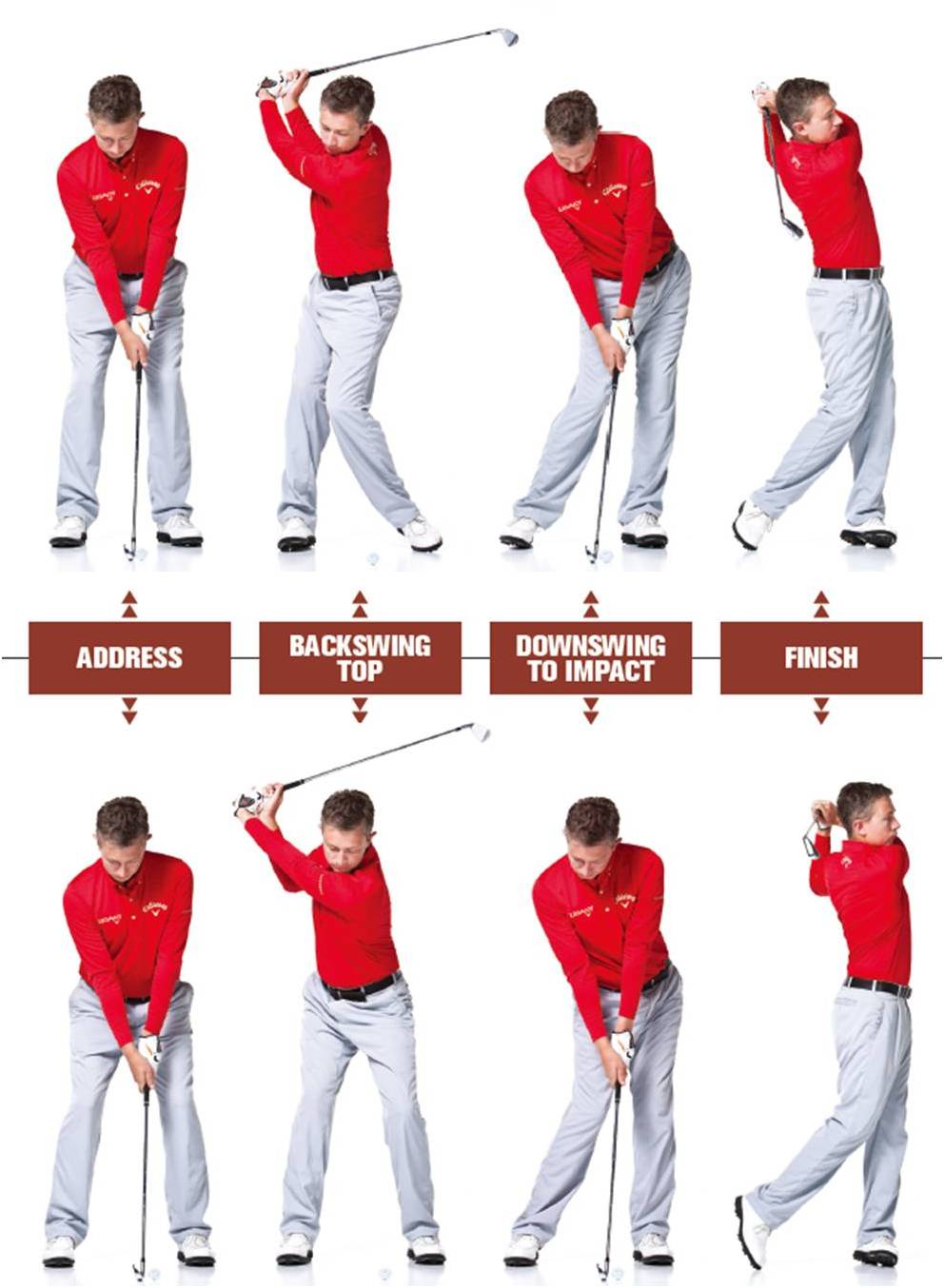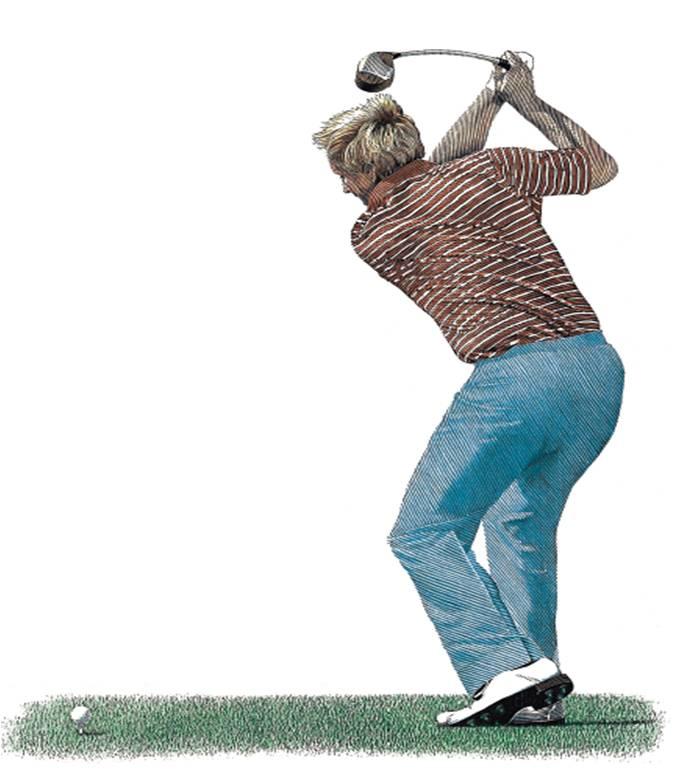Golf – Old Swing vs Modern Swing
Modern Golf Swing
Coaching science is very young. 30 years ago, there was no such thing as a specialist golf coach. There was the club pro whose primary focus was on club sales and servicing the members and who would give a few tips on the course. No doubt, there have been some mistakes over the last 30 years. Things that were simply the opinions of coaches, with no research or proof to say if it was an improvement on what players did before, have stuck and become normal with no one questioning whether it is right or not. It is my opinion that in the last 5 years the science of golf teaching has taken a big step forward. More people are studying the golf swing with technology available to ask the question, is what we think is right, actually right? It turns out some of the aspects of older players swings had merit. Recently, I have been enjoying looking at some old swings of the greats of the game; for example, Bobby Jones, Sam Snead, Jack Nicholas, and Arnold Palmer, and then comparing these players against modern day players. In this article, I will demonstrate the common aspects of the old and modern swings which I have seen, comparing the two, and showing you what you can learn.
Old Address – With the older players, they generally stand with their feet a little closer together and their feet turned out more than the modern player.
Modern address – The stance tends to be a little wider with the feet more square. In general, the muscles in the legs look a little more switched on, creating a solid base.
Old Backswing Top – In the old swing, the right leg straightens a lot more, with the right hip moving towards the target and in a very high position. The left knee, in the old swing, moves a lot more, especially inward towards the ball. Combine this with a much bigger hip turn, the left heel will rise off the ground so that it is only the inner part of the left toe touching the ground.
Modern Backswing Top – In the modern swing, there is a lot of resistance at the top of the swing. The right leg has not straightened much (still a little), resulting in a lower right hip position. The left leg has held its position more, creating resistance and a smaller hip turn; as a result, the shoulders have turned less, as well.
Old Downswing to Impact – The old swing is very much a result of what happened in the backswing, because the legs moved a lot more, with the left heel off the ground. The legs simply have to move more in the downswing. This is why there was a lot more drive of the legs with the hips siding more to the left through impact. There is a very clear transition with the lower body moving first.
Modern Downswing to Impact – With the top players, you see a weight shift to the left with a rotation of the hips. Generally, the left hip does not get past the left foot, and the legs maintain that very stable look.
Old Finish – Because of the slide of the hips through impact, the upper body hangs back, creating the C shaped finish you see with the old players.
New Finish – In the finish position, the body is lined-up straight with the upper body over the lower body, and in a straight line.
What can learn from the old swing?
First of all, so there is no confusion, I do not believe the old swing is better than the new, but I do feel there is something to be learnt.
Address
I believe that at address too many players are standing with their feet too far apart, and too square in the modern swing. We are looking to create a pivot movement which stays central, and too big a stance makes this more difficult. Also, too square a foot position can make it difficult to rotate, and if players cannot rotate to create their speed, once again, it will encourage them to move laterally to create speed, which does not create consistency.
Top of backswing
What I find interesting about the top of the backswing is that it is not a position. (please think about that for a moment and try to understand what I am saying) The player could not stop and hold this position; in fact, in taking this picture, I did not stop and stay still like I normally would; it would be impossible. I had to ask the cameraman to take the picture just at the right time. Try putting yourself in this position, and you will know what I mean. With this movement, there is almost no way to stop the downswing, starting with the lower body first.
Downswing to Impact
In this article, I am separating the backswing and downswing, which nearly every article or swing analysis has done in the past, but I feel this is what we can learn the most from the older players style of swing. The older swing is much more one continuous movement. In fact, because everything is in continuous motion, you could say there is no top of the backswing position. The transition and downswing is not a forced conscious movement. It blends in with one flowing movement. It is a natural reaction to the body movement in the backswing. What nearly every player around the world is trying to do is create a transition where the lower body moves first by the weight shifting across to the left foot. Perhaps, you can see that with the older swing. This happens a lot more naturally.
The Finish
The follow through position in the older style swing is not something I recommend copying; the lateral slide of the hips and reverse C of the spine puts a lot of pressure on your back. Keeping your back as straight as possible, like you see with most modern players, is a definite improvement on the past.
Today’s great
I believe the great players of today, Rory Mclroy, Tiger Woods, Yani Tsang, and Choi Na Yeon, for example, have learnt the perfect mix of the old and the new, and this is what I want everyone to learn from this article. Their swings are a little tighter; they have more resistance in the lower body, creating a smaller hip turn and shoulder turn, which results in a shorter swing. This resistance can create more distance with the benefit of consistency, but they do not take it to the extreme, which many players are doing these days. Their stances are not overly wide; their feet are turned out a little at address. In the backswing, their right legs straighten a little more than what has been taught over the last 20 years; and very importantly, their left heel rises slightly off the ground, so little that you may not be able to see it, but certainly the pressure of the left heel on the ground is very light. In this position, they get that benefit of the modern tight swing, but also the benefit of the old swing, with the downswing being a very natural reaction. The lower body moves first, but not the big slide of hips and legs as in the old swing, so they finish with their body in a straight line, taking the pressure off their back.
So the next time you go to the range try taking some of the images of the old swings with you. I am sure you will start to feel a lot more natural rhythm in your swing, and the transition which may have been so difficult for you up to now will become effortless and natural.


